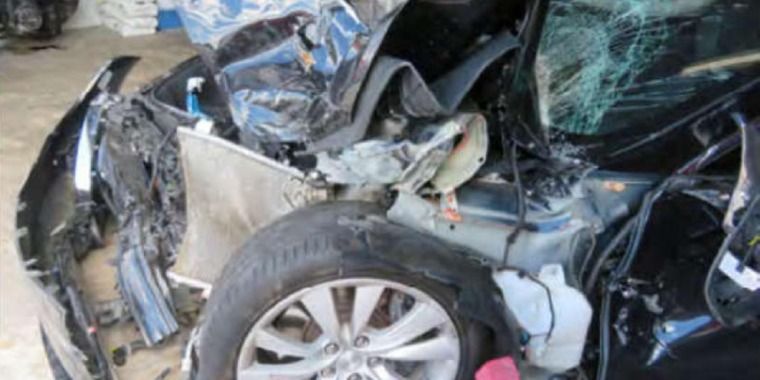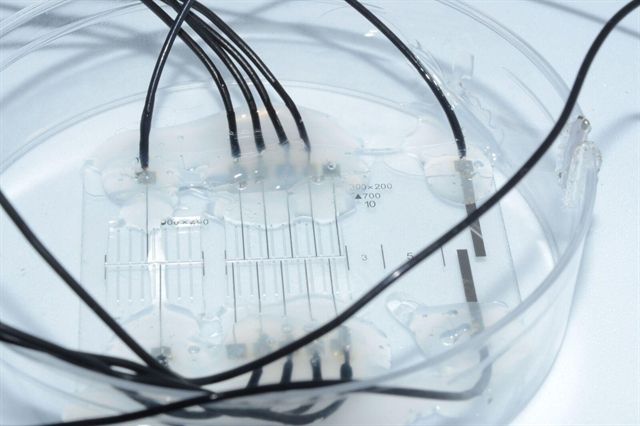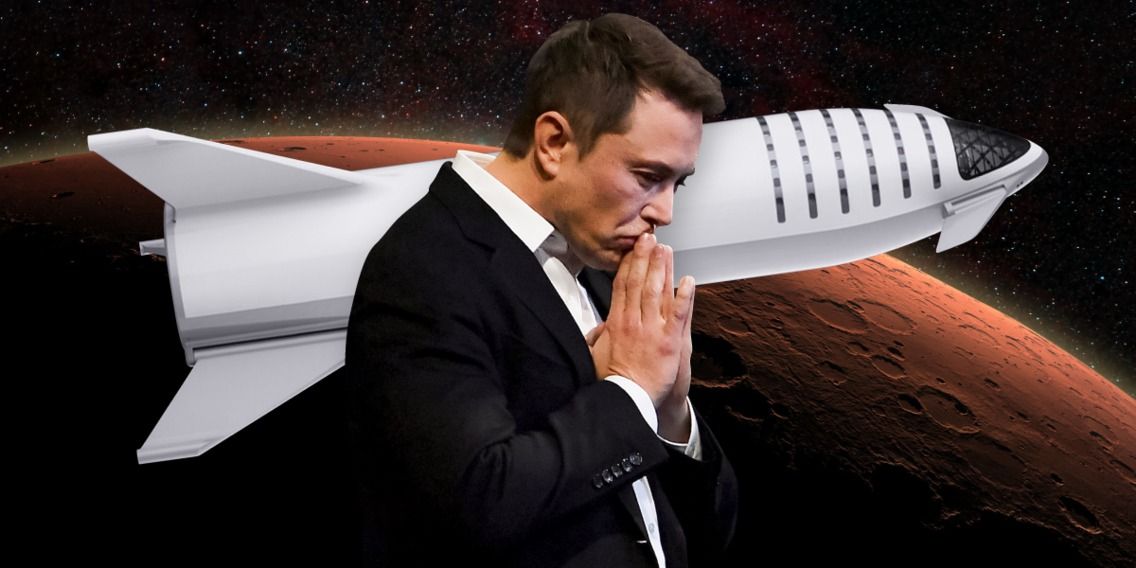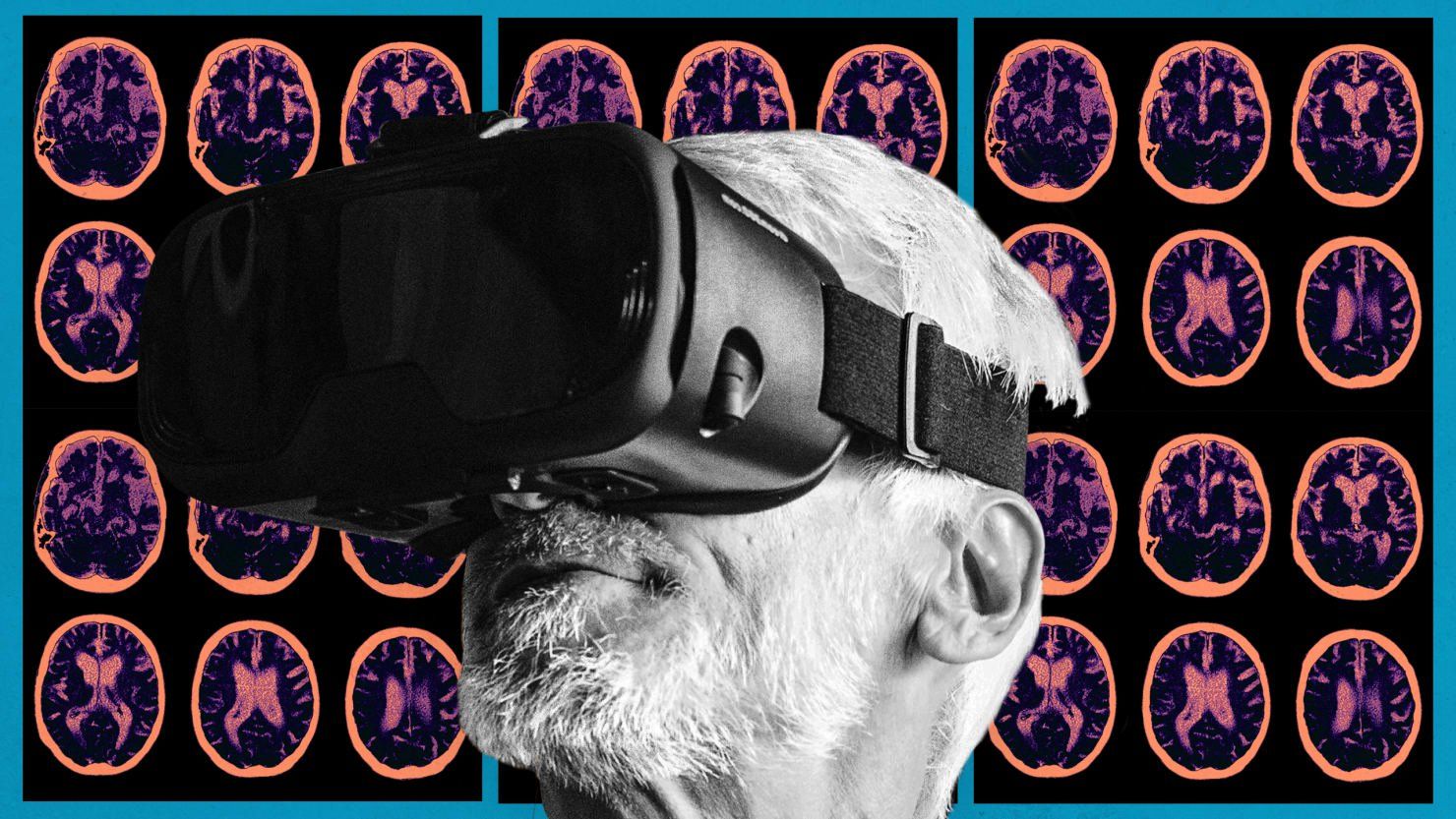Page 9407
So does our Milky Way galaxy—although these bubbles might be a little bigger than what you’re used to. Two bubbles, each 25,000 light-years tall, are extending above and below the disk of the galaxy like the two halves of an hourglass. Discover possible explanations for these bubbles:
Nov 3, 2018
Another Tesla with Autopilot crashed into a stationary object—the driver is suing
Posted by Michael Lance in categories: robotics/AI, sustainability, transportation
To be fair to Tesla, this problem isn’t unique to the company. Most emergency braking systems on the market today won’t stop for stationary objects at freeway speeds. These systems are not sophisticated enough to distinguish a stationary object on the road from one that’s next to or above the road. So to make the problem easier to handle, the cars may just ignore stationary objects, assuming that the driver will steer around them.
Florida man says Tesla oversold Autopilot’s capabilities.
Nov 3, 2018
Nerve-on-a-Chip Makes Neuroprosthetics Possible
Posted by Klaus Baldauf in categories: biotech/medical, cyborgs, neuroscience
Neuroprosthetics are implants that contain an arrangement of multi-contact electrodes capable of substituting for certain nerve functionalities in the human body. This technology has the potential to work wonders for people who have been injured or paralyzed, able to restore the sense of touch for amputees, help someone who has been paralyzed to walk again by stimulating their spinal cords, or silence the nerve activity of people suffering from chronic pain. This would provide many people with a greater degree of mobility, functionality, and a higher overall quality of life.
Stimulating nerves at the right place and the right time is essential for implementing effective treatments, but remains a challenge due to implants’ inability to record neural activity precisely. “Our brain sends and receives millions of nerve impulses, but we typically implant only about a dozen electrodes in patients. This type of interface often doesn’t have the resolution necessary to match the complex patterns of information exchange in a patient’s nervous system,” says Sandra Gribi, a PhD student at the Bertarelli Foundation Chair in Neuroprosthetic Technology.
Nov 3, 2018
Elon Musk says SpaceX is on track to launch people to Mars within 6 years — here’s the full timeline of his plans to colonize the red planet
Posted by Michael Lance in categories: Elon Musk, space travel
Humans on Mars in 2024? Musk thinks it will happen.
Elon Musk founded SpaceX in hopes of colonizing Mars, and the tech mogul is unafraid of sharing his timelines to launch humans to the red planet.
Nov 3, 2018
NASA Discovered A New Planet Using AI
Posted by Michael Lance in categories: robotics/AI, space
Nov 2, 2018
How do jumping genes cause disease, drive evolution?
Posted by Genevieve Klien in categories: biotech/medical, evolution, genetics
Almost half of our DNA sequences are made up of jumping genes—also known as transposons. They jump around the genome in developing sperm and egg cells and are important to evolution. But their mobilization can also cause new mutations that lead to diseases, such as hemophilia and cancer. Remarkably little is known about when and where their movements occur in developing reproductive cells, the key process that ensures their propagation in future generations, but can lead to genetic disorders for the hosts.
To address this problem, a team of Carnegie researchers developed new techniques to track the mobilization of jumping genes. They found that during a particular period of egg development, a group of jumping-genes called retrotransposons hijacks special cells called nurse cells that nurture the developing eggs. These jumping genes use nurse cells to produce invasive material (copies of themselves called virus-like particles) that move into a nearby egg and then mobilize into the egg’s DNA. The research is published in the July 26 on-line issue of Cell.
Animals have unwittingly developed a powerful system to suppress jumping gene activity that uses small, non-coding RNAs called piRNAs, which recognize jumping genes and suppress their activity. Occasionally, jumping genes still manage to move, suggesting that they employ some special tactics to escape piRNA control. However, tracking the mobilization of jumping genes to understand their tactics has been a daunting task.
Nov 2, 2018
The explosive science behind fireworks
Posted by Genevieve Klien in categories: chemistry, science
Jump to media player The surprisingly simple science behind the clever chemistry that helps your night go off with a bang.
Nov 2, 2018
Quantum Navigation Could be as Accurate as GPS, Without Satellites
Posted by Genevieve Klien in categories: quantum physics, satellites
Nov 2, 2018
How Virtual Reality Can Help Fight Dementia
Posted by Genevieve Klien in categories: biotech/medical, neuroscience, virtual reality
Immersive experiences have been used for video games and entertainment. But a new therapy could make VR an accessible therapy for dementia patients.
11.02.18 9:58 PM ET


















